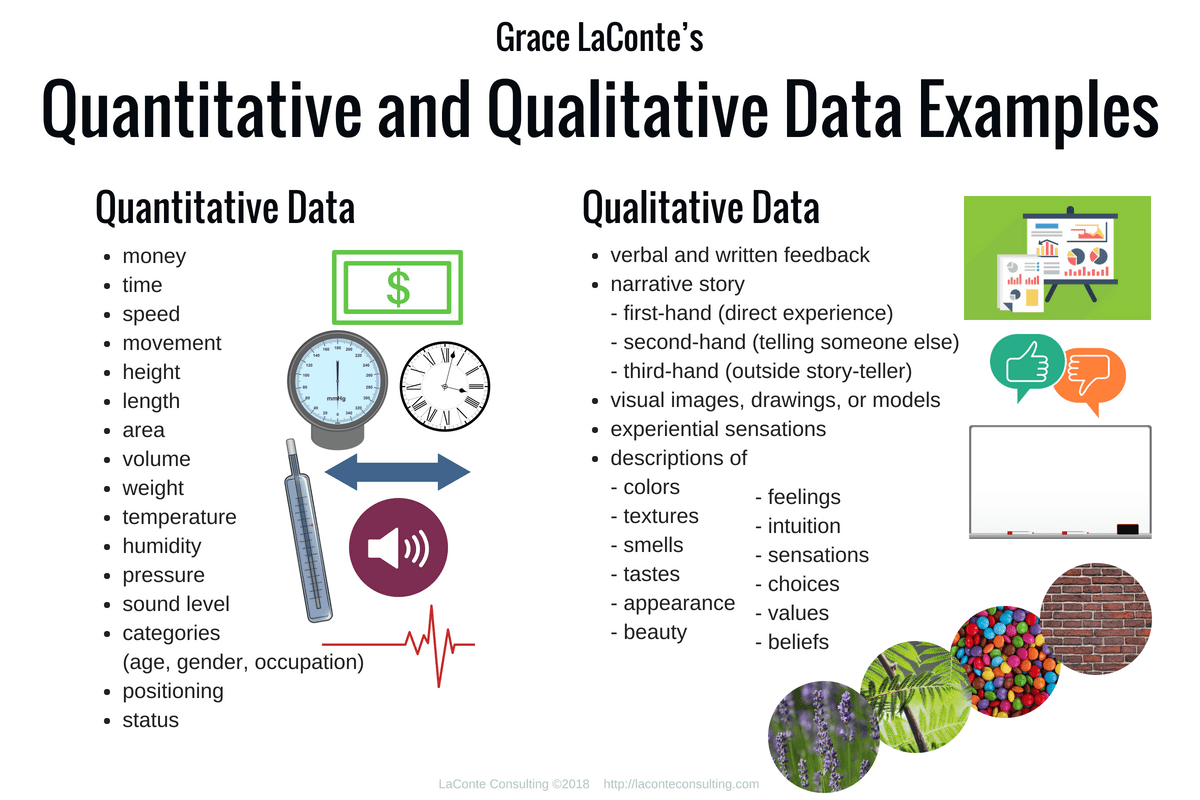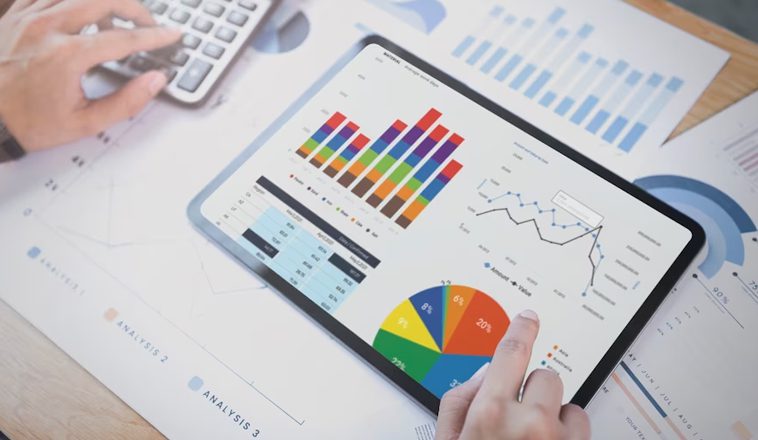Quantitative and qualitative data are both used in data analysis. The two types of data are different and give different results. But they are often used together to gather information on the same data unit. Extensive data analysis involves both quantitative and qualitative data. So, what is the difference between quantitative and qualitative data? There are several differences. Whereas Quantitative data is measurable, qualitative data is not. You cannot enumerate qualitative data—besides, a quantitative data center on mathematical calculations that involve numbers. Qualitative data focus on descriptions and does not include calculations. Quantitative data is objective and conclusive. Qualitative data is subjective, descriptive, and exploratory. Let’s take a look at a few examples for in-depth understanding:
Table of Contents
Quantitative Vs. Qualitative Differences and Examples
Take an example of a person as a data unit. You can gather some information about the person as follows:
Question: How old are you?
Answer: 42 (this is quantitative)
Question: What are you?
Answer: A pilot (this is qualitative)
Question: What is your salary?
Answer: $30,000 per month (quantitative)
Question: What type of car do you drive?
Answer: Mercedes Benz S-class (Qualitative)
Question: What is your marital status?
Answer: Divorced (qualitative)
Question: How many children do you have?
Answer: 3 (quantitative)

It is that simple. If you can quantify it, then it is quantitative data. It is qualitative data if you cannot quantify it. And that is the main difference between quantitative and qualitative data. The bookcase above is another good example of qualitative data. It entails a categorical description of the data item (bookcase). Plus, it uses identifiers such as labels, attributes, and other properties of an item. Qualitative data is also known as categorical data. Unlike quantitative data, qualitative data is open-ended. The respondents in qualitative data gathering can express themselves in detail. There is no such freedom in quantitative data gathering.
Besides, qualitative data is investigative. Here are some of the ways through which we can generate qualitative data.
- Interviews
- Observations
- Video and audio recording
- Texts and documents
- Questionnaires
See More: Tips for writing Business emails & Achieve your Business Goal
Types of Qualitative Data
There are two types of qualitative data. These are:
Ordinal
We arrange variables in ordinal data into different categories. A company may want to know the opinion of customers on its products. It can use an online questionnaire with the question: “How would you rate our product?”
- Good
- Very Good
- Bad
- Very bad
Nominal
Nominal data use variables that do not have quantitative values. In some cases, nominal data may have quantitative or numerical values. For example, your phone number is nominal, even though it comprises numerals. But, using mathematical operators on phone numbers does not produce a meaningful numerical outcome. Why? Because the data is nominal. In some cases, ordinal data is classifiable as a quantitative data type. It can be a mix of qualitative and quantitative data. That is so because ordinal data exhibits both quantitative and qualitative characteristics.
The above example, still using the bookcase, illustrates more about quantitative data. As you can see, one can quantify variables in this example. Quantitative data is structured and closed-ended. The questions asked in quantitative data analysis are closed. They need a straight answer with little room for further explanation. Here are examples:
How many legs does a normal cow have? At what age did you start schooling?
Types of Quantitative Data
There are two types of quantitative data, namely:
- Continuous data
- Discrete data
Continuous Data
Continuous data takes a value within a given range and can change. Examples include:
- The weight of matter, e.g., a piece of rock, an animal, a log of wood, etc.
- The height of a person
- The time it takes to do something.
Discrete Data
Discrete data takes a definite value. Examples include:
- The number of children born in a given hospital on a given day.
- The score in a football match, i.e., even or odd.
- The number of winners in a race. We can only have one winner at any given time.
- The number of bags of cement sold by a cement dealer in a given month.
We can generate quantitative data through surveys, tests, market reports, and experiments.
Also, You Can Read 5 Easy and Simplistic Steps to Access Windows 10 BIOS
Quantitative Vs. Qualitative: Which Is Better For Data Analysis?
We have explained quantitative and qualitative data. But, you may be wondering which is the better option for data analysis. As we have seen, quantitative and qualitative data can focus on the same data item. But they do so from different perspectives. While quantitative data is structured, closed-ended, and quantifiable, qualitative data is unstructured, open-ended, and descriptive. So, which of the two is better than the other? Well, it depends on the type of analysis or data research you want to carry out. Also, both quantitative and qualitative data have their strengths and weaknesses. Therefore, concluding which is better than the other would be possible if they give the same outcome. But that is not the case.
Relational databases have made the gathering and storing of analytical data very manageable. A good example is NoSQL. This type of database stores data in a format that is not relational or tabular. It stores related data in a single structure. In SQL databases, we split data and store it in different tables. Types of NoSQL databases include:
- Document databases
- Key-value databases
- Graph databases
- Wide-column stores
The structured nature of quantitative data makes it easy to format. Also, searching within relational databases is easy and efficient. Note that the type of database you need for data analysis depends on such factors as:
- The volume of data you want to analyze
- The type of data
- How urgent the analysis is
- The level of knowledge you have about the database.
There are premium and open-source (free) database management tools that you can use for quantitative and qualitative data analysis. Ensure you settle on the suitable one for the nature of data analysis you intend to carry out.
Here are a few more topics that you shouldn’t miss:
6 Best Free Drawing Software for Artist in [2020]
11 Fastest Growing Expertise of Gig Workers
How to Quickly Make Your Google Analytics CCPA Compliance
Like this post? Don’t forget to share






